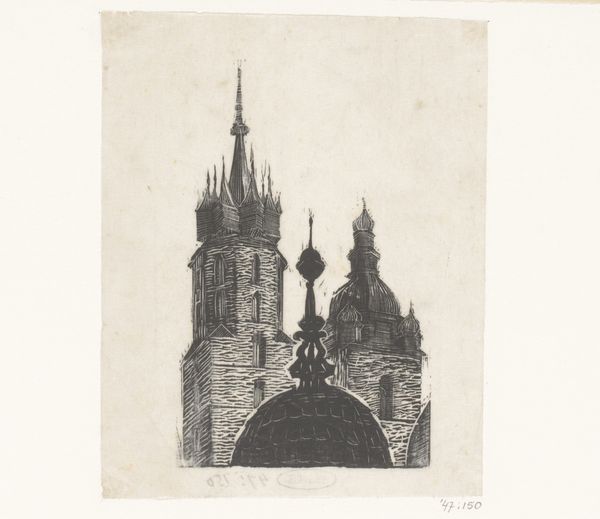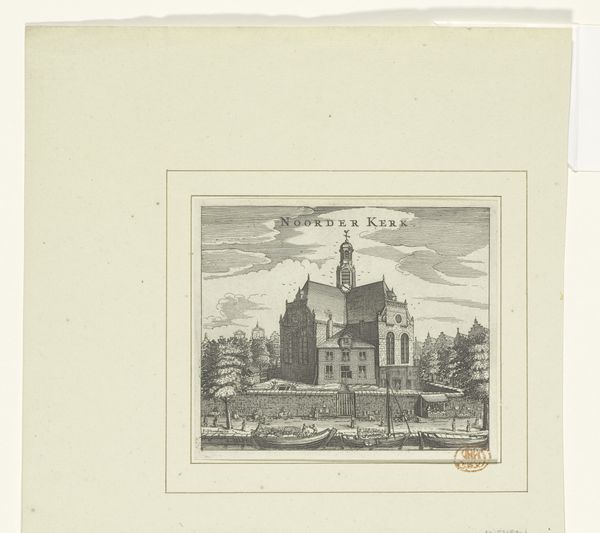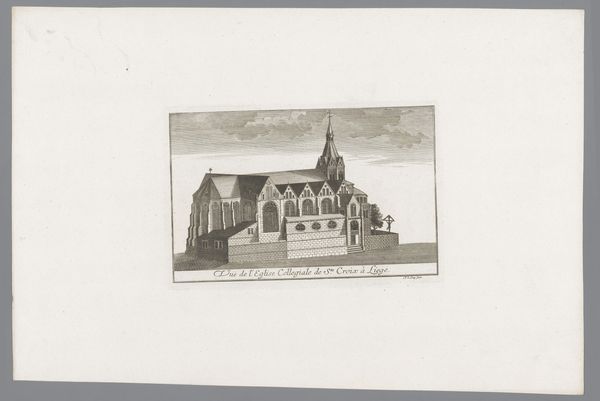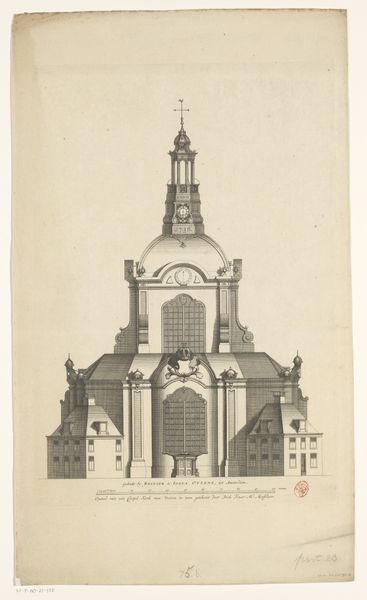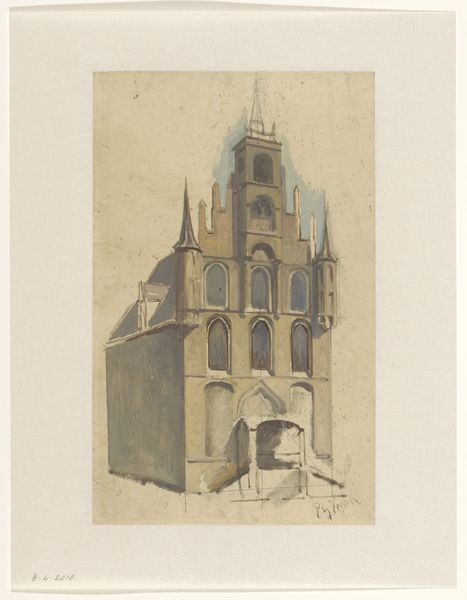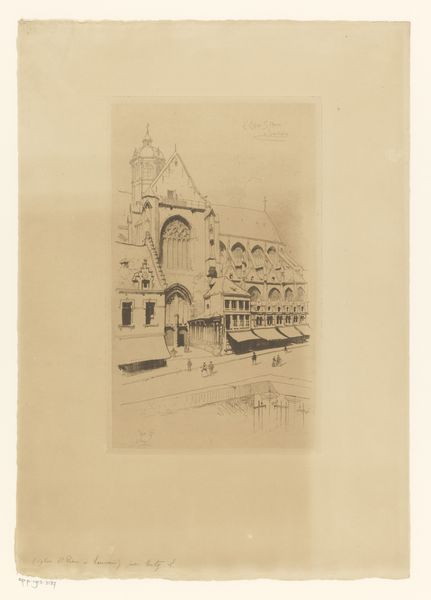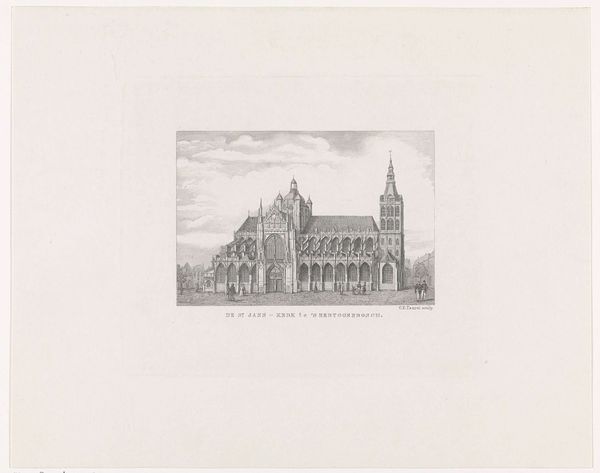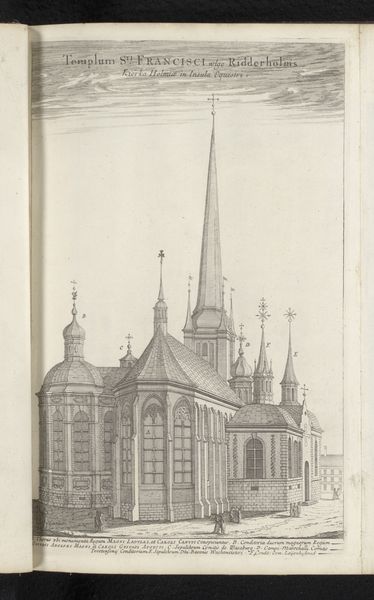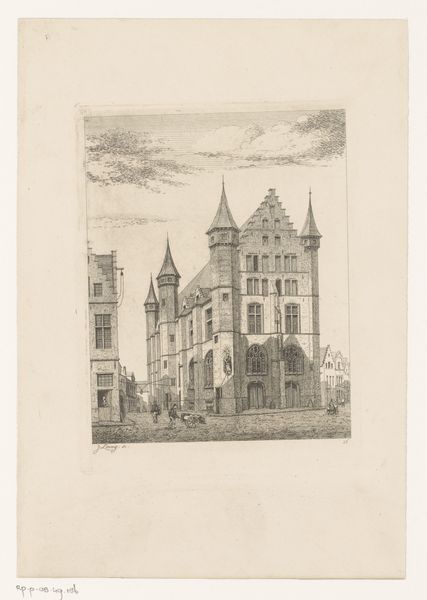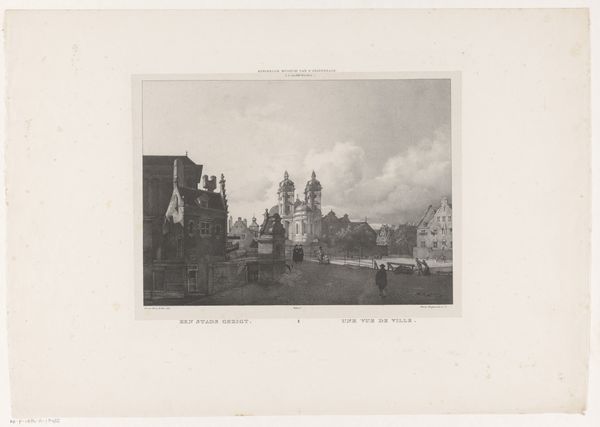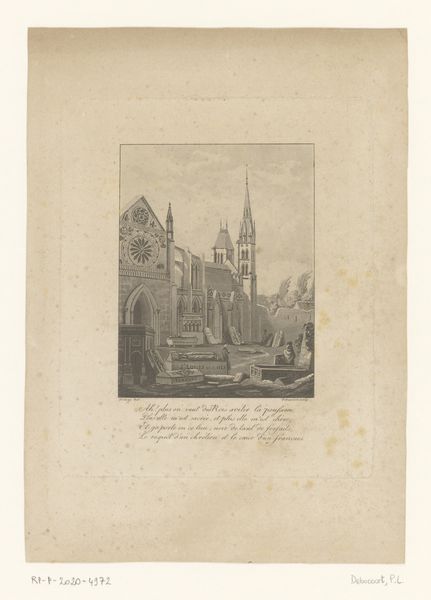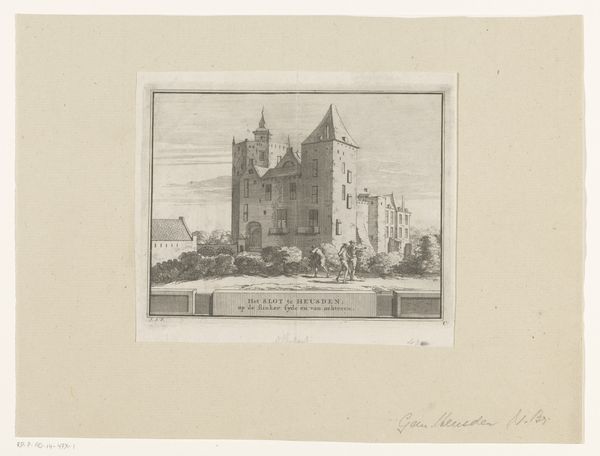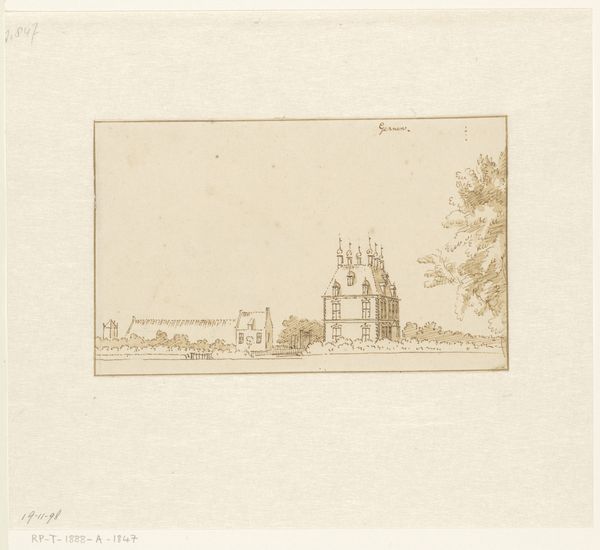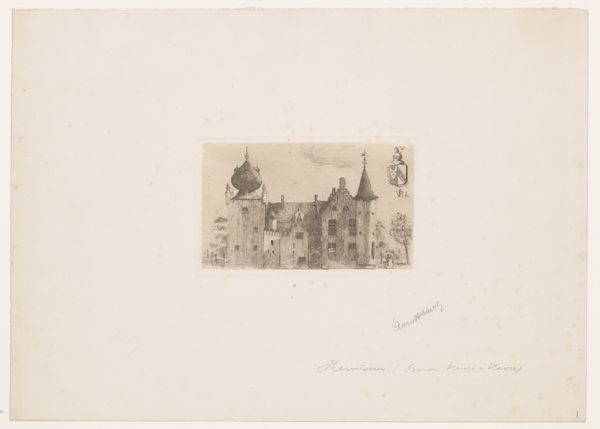
print, etching, photography, architecture
#
16_19th-century
# print
#
etching
#
landscape
#
photography
#
england
#
sketchbook drawing
#
cityscape
#
architecture
Dimensions: 7.7 × 7 cm (image); 22.2 × 12.6 cm (paper)
Copyright: Public Domain
This calotype of a church was made by William Henry Fox Talbot sometime in the 1840s. Talbot was one of photography's great pioneers, experimenting with paper coated in silver iodide to capture a negative image. This was then fixed, and used to create a positive print. The materiality of Talbot's calotypes influenced their appearance. The paper fibers created a soft, slightly blurred effect compared to the sharper daguerreotypes popular at the time. The texture and weight of the paper support also contributed to the overall aesthetic, conveying a sense of immediacy and intimacy. Talbot's invention democratized image-making, and also raised questions about labor and value. Photography offered a way to mechanically reproduce the world, challenging the traditional role of the artist as a skilled hand. By emphasizing the importance of materials, making, and context, we can appreciate the full meaning of Talbot's calotypes and their impact on the history of art and visual culture.
Comments
No comments
Be the first to comment and join the conversation on the ultimate creative platform.
